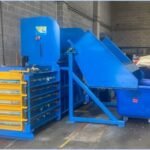When considering the installation of a fence around your property, choosing the right fencing material is crucial. Whether you’re looking to increase privacy, enhance curb appeal, or create a secure boundary, the material you choose plays a significant role in the overall functionality and aesthetic of your space. But with so many fencing options available, how do you know which one is best for your property? Here’s a comprehensive guide on how to choose the right fencing material and the importance of selecting a reputable fencing contractor to help you through the process.
1. Consider the Purpose of the Fence
In the beginning before you start exploring materials it is very fundamental to outline the Fence Purpose in a very clear Way. Are you searching for a privacy wall, a security wall, an ornament or just to keep pets and kids out of danger? The material that you choose will be determined primarily by your objectives.
- Privacy Fences: If privacy is the sole reason for the fence, you will definitely look for a wooden or other material that makes it very difficult to see through it. An excellent decision would be alternative materials that could be glued with just a few gaps in the panels of the wood, vinyl, or composite fencing.
- Security Fences: Is security your major priority? In that case, options like wrought iron, chain link, or steel fences are the ones for you. These types of materials are virtually vandalism-free and can stand the forces that a person can apply to them if they are properly installed.
- Aesthetic Appeal: An ornamental metal gate is a practical way to make your property stand out. For instance, your house will look far more attractive to passersby if a wrought iron or aluminum fence is installed. On the other hand, a wooden fence can bring extra warmth to your property if you choose it with a decorative design.
- Defensive Barriers: Besides design, the primary purpose of the fence can also be a pet safety fence. Materials such as vinyl, wood, or chain link are desirable. You can ensure that the height of the fence will be sufficient enough to conceal the gaps through which animals or kids can easily crawl in.
2. Inspect the Climate and Environment
When deciding which fencing material to choose, the local weather is a deciding factor. Stormy weather like high winds, rains, and dry heat can affect the longevity of your fence.
- Wood Fencing: While wood has a beautiful and natural appearance, it is extremely easy to rot and decay when it is exposed to excessive moisture. If you live in a place with a high humidity level or where it rains dens regularly, you can look into alternative materials such as vinyl or metal that are more weather-resistant.
- Vinyl Fencing: Vinyl fences are moisture, heat, and UV resistant which makes them less likely to fail in areas that experience heavy weathering.
- Metal Fencing: Wrought iron and aluminum fences are extra long-lasting and can be implemented in any climate. But, wrought-iron can fall into the rust trap if it is not treated or serviced correctly.
- Chain Link Fencing: Chain link fences are flexible and they need less maintenance. They are typically effective in harsh weather conditions though some rust control treatment may be needed from time to time, for example, around coastal areas that face saltwater exposure.
3. Scrutinize the Maintenance Requirements
Different types of fencing materials come with different maintenance needs. Some of them will require more maintenance than others; on the other hand, others will be relatively free of maintenance.
- Wood Fencing: Striking yet burdensome, wood fences are a sight to behold. To protect the fences from natural elements and decay, you will have to stain or seal them on a regular basis.
- Vinyl Fencing: Vinyl fences are maintenance-friendly. They do not require any painting or staining, and they are pest and rot resistant. Usually, just a cleaning with soap and water is all it takes to keep them in pristine condition.
- Metal Fencing: Metal fences made from wrought iron and aluminum last long but will need some methods for rust prevention. Especially, they have to be checked if some parts are worn out. Aluminum though is more corrosion-resistant than wrought iron which is one of its advantages.
- Chain Link Fencing: Chain link fences are easy to maintain since they only require an occasional cleaning and are mostly left alone. However, they may need painter coatings to prevent rust, this can happen in some environments.
4. Mind Your Budget
The price of different fencing materials can be vastly different; hence it is crucial to select a type of material that sits comfortably in your budget and at the same time satisfies your wants. Going for the cheapest option may be tempting but it is very important to take care of long-term value, durability, and maintenance costs in the first place.
- Wood Fencing: Wood is usually cheaper to buy but it will cost more to maintain it later due to the need for painting, staining, and repair.
- Vinyl Fencing: The initial cost of vinyl fences may be higher than wood, but they are conducive to maintenance and durable which makes them the most affordable option in the long term.
- Metal Fencing: Wrought iron is more expensive than aluminum and chain link, yet it is probably the most robust and therefore the one that will add the most value to the property. Aluminum costs less than wrought iron, yet it offers good sturdiness and looks decorative.
- Chain Link Fencing: Generally speaking, chain link fences are the most economical option, however, they may not be as attractive as some other materials. That said, they are a great option if you are concerned about security and your budget is tight.
5. Contemplate the Style and Aesthetic of Your Property
A fence is not just a border but a very important element of design that should enhance the overall look of your property. The right fence can increase the attractiveness of your house, while the wrong one can do the opposite. When choosing the material, you should consider if it will complement the existing architecture and landscaping.
- Wood Fencing: Practical and customizable wood fences can fit into a number of styles such as the classic picket, split rail, and privacy designs. Additionally, wood can be painted or stained to match the outside of your property.
- Metal Fencing: Wrought iron and aluminum fences have a cleaner, more classical aesthetic which would be suited to a traditional house or property.
- Vinyl Fencing: Vinyl fences are the epitome of flexibility, being available in many styles and colors; they can serve any preference. They also have designs that imitate the wood look, so you can have the flap of both materials.
6. Choosing the Right Fencing Contractor
Choosing the right fencing contractor becomes very crucial, when you have selected the particular fencing material for the property, in order to make sure that the installation is carried out correctly at a high level. A professional contractor is the one who will have the capacity as well as the know-how to walk you through the material selection, help in sourcing the material, and carry out fence installation correctly.
- Check Reviews and References: Go for contractors with good customers’ recommendations and testimonials. Demand for reference from former clients and that way you will, in fact, be able to evaluate their deliverables.
- Experience and Expertise: Go for a contractor who has installed that particular type of fence you have chosen. An experienced contractor will set up the right way, thus ensuring that the fence will be long-lasting.
- Get Multiple Quotes: It is advisable to get in touch with some contractors for several quotes and compare them. Make sure to thoroughly analyze the price structure that they give you including materials, labor, and any extras services.
- Ensure Proper Licensing and Insurance: Before everything else, make sure the contractor is both licensed and insured so you can avoid potential liabilities in case of accidents during the installation.
Conclusion
The choice of the best fencing material for your property is a multilevel process that should be conducted with care involving your actual needs, budget constraints, and design preferences. The proposed route includes determining the fence goals, the climate conditions, maintenance obligations, and finances, thus you will have informed on your choice. Furthermore, a qualified contractor should be involved whose workmanship professionalism makes sure the fence is according to your requirement.






